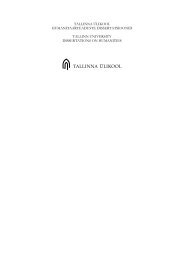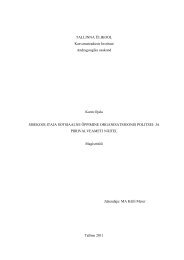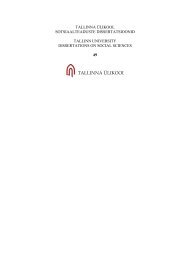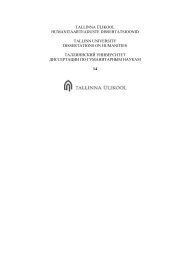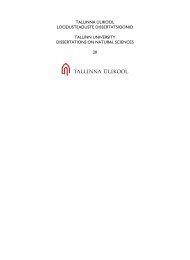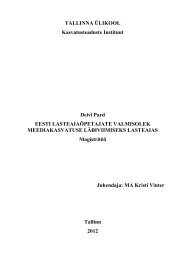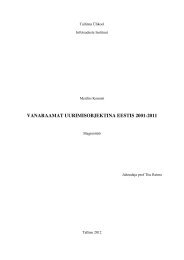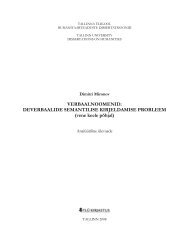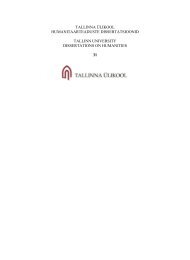Download (1157Kb) - E-Ait
Download (1157Kb) - E-Ait
Download (1157Kb) - E-Ait
You also want an ePaper? Increase the reach of your titles
YUMPU automatically turns print PDFs into web optimized ePapers that Google loves.
3.10. Research Limitations and Time frame.<br />
Time needed to collect the data and present the findings was indeed a challenge and a<br />
limiting factor to this research. This affected the size of the sample selected, the methodology<br />
and the instrument used to collect data. Questionnaires were used as the only feasible data<br />
collection method with the time scale and distance limit. Formal interviews and other<br />
methods could have been useful but due to time limits, It was not possible to make use of<br />
them.<br />
Again this research was limited in terms of the literature. Given the fact that the amount of<br />
literature on intellectual capital is indeed vast, the literature specifically relating to<br />
intellectual capital matters pertaining to libraries is limited. Much can be found in the<br />
business context.<br />
The distance to the field area has limited this research a great deal. The choices of<br />
methodology and sampling have been constrained by the distance. The use of such methods<br />
as interview and observation proved to be difficult and at times impossible. With the<br />
divergence of the study population the only feasible sampling method was snowball sampling<br />
which is criticised for its inability to overcome biases. The myriad of sampling possibilities<br />
and methodologies could have been feasible if not for the distance; for instance random<br />
sampling and even interviews to mention but a few. See Time frame in appendices.<br />
3.11. Chapter summary<br />
Intellectual capital may be discussed from various perspectives. This chapter started by<br />
presenting a theoretical framework. Under this framework intellectual capital and its<br />
components are defined and given context in the sense of this research. Then this chapter<br />
outlined the perspective chosen by this research. In relation to the aims and objectives of this<br />
research, the postpostivistic view was preferred. The choice of methodology is explained in<br />
this chapter. Survey is the methodology used by this research due to the factors explained in<br />
section 3.2. To achieve its goal the research applied both qualitative and quantitative<br />
methods, among other reasons being the possibility to take the advantage of the strength of<br />
each method to ensure reliability and validity. The research covered public university<br />
libraries of Tanzania and used snowball sampling. Data was collected using questionnaires<br />
supplemented by secondary sources such as information found in websites. At the end of this<br />
34



